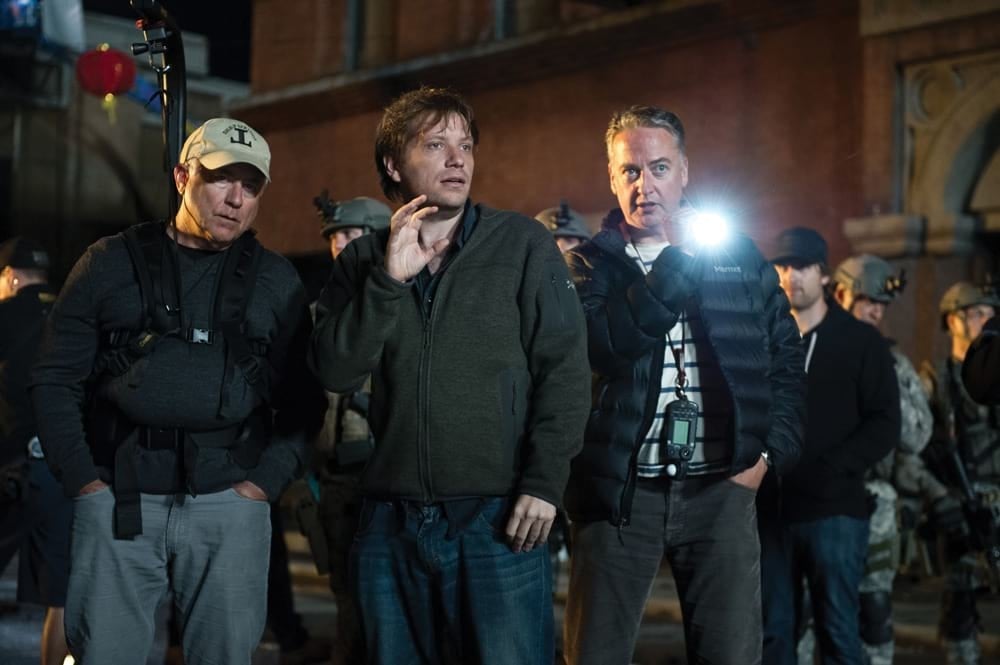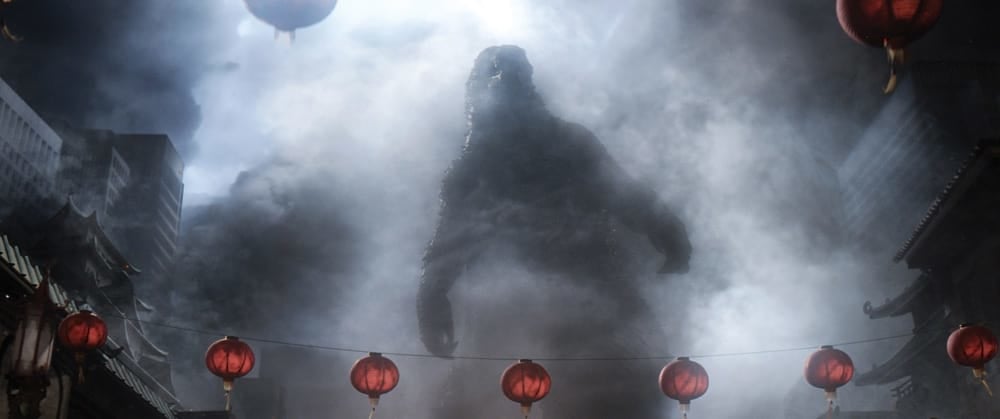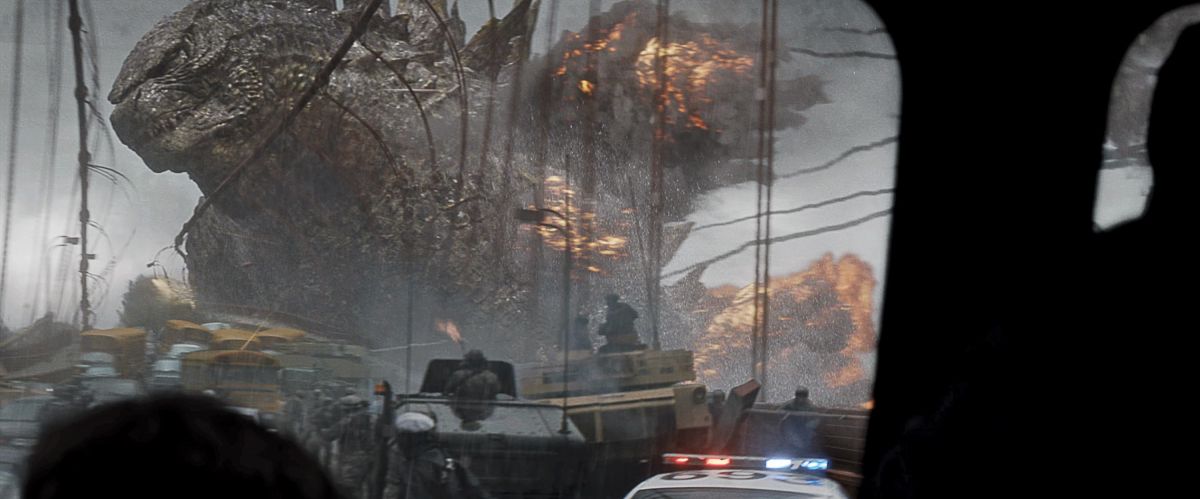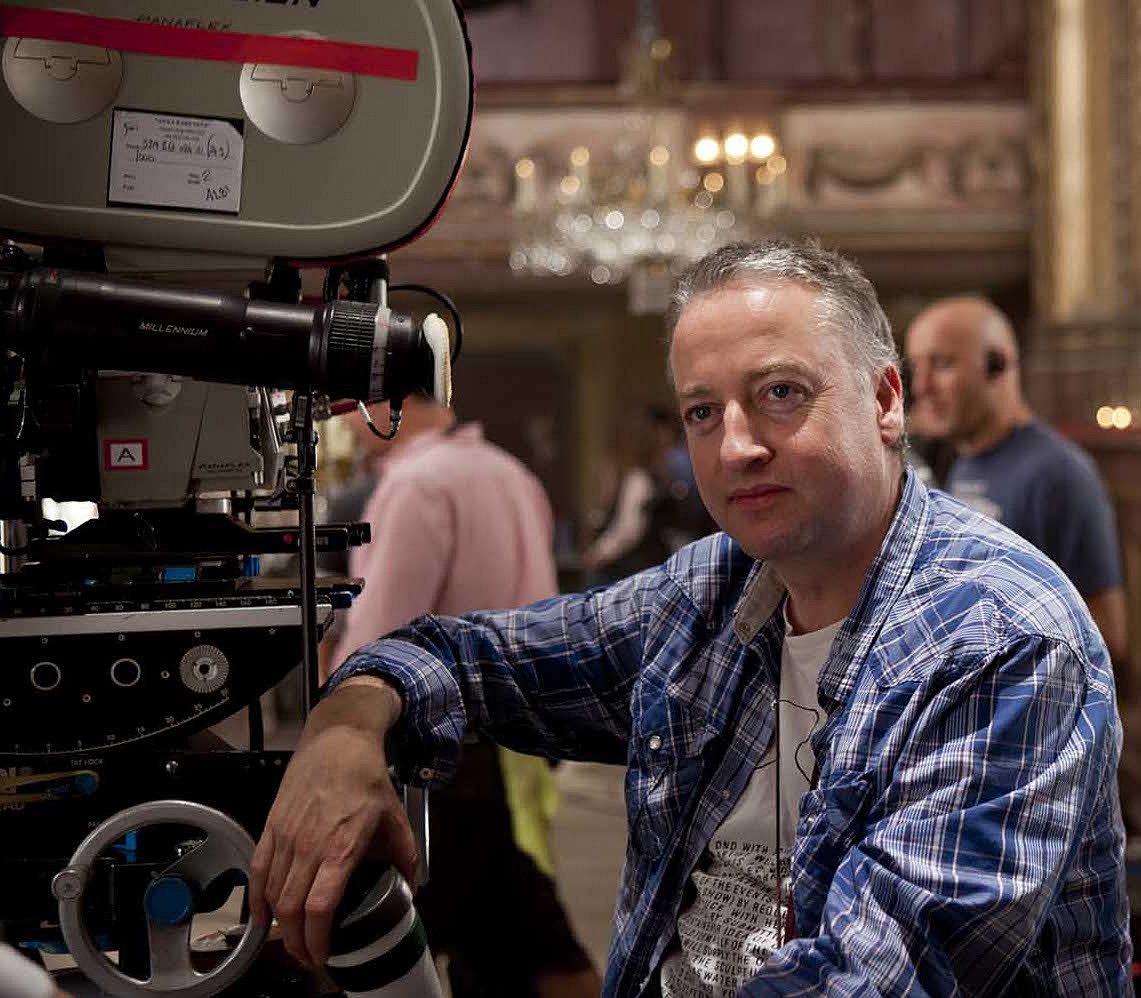
Godzilla: King of the Monsters
Seamus McGarvey, ASC, BSC, teams with director Gareth Edwards to help the iconic giant creature wreak more havoc.
Since Godzilla made his debut in the 1954 Japanese film Gojira (released in the U.S. as Godzilla: King of the Monsters in 1956), the radioactive super saurian has appeared in more than 30 feature films, spawned numerous imitators and established the uniquely Japanese kaiju (“strange monster”) sci-fi subgenre, whose recent Hollywood variants have included Pacific Rim (AC Aug. ’13), Super 8 (AC July ’11) and Cloverfield (AC March ’08). British filmmaker Gareth Edwards reimagined the genre with the low-budget hit Monsters (AC Nov. ’10), which attracted the attention of Legendary Pictures producer Thomas Tull, who was seeking to revive the Godzilla franchise. “Gareth proved to us not only that he had the technical capability to make a truly cinematic picture, but also that he could bring a human element that would help Godzilla speak to a broad audience,” says Tull. “It was our job to support him with the best creative people possible so he could accomplish that.”
Edwards concurs. “My entire Godzilla crew was made up of some of the most talented and creative people in their fields,” he says, “and when Seamus McGarvey [ASC, BSC] signed on, I knew Legendary was doing their best to protect me and the picture.”
After the success of The Avengers (AC June ’12), anyone seeking a cinematographer for a big-budget sci-fi film might have McGarvey at the top of their list, but Edwards says he was actually even more impressed by McGarvey’s lush, atmospheric work in smaller, character-driven pictures such as Anna Karenina (AC Dec. ’12) and Atonement (AC Dec. ’07). “I remember watching Anna Karenina and having the biggest smile on my face, thinking, ‘My God, this is so beautiful, and this guy is shooting my movie!’” Edwards recalls. “I felt incredibly lucky. Godzilla needed to have the spectacle and epic scale people expected, but I also wanted it to have some soul and realistic beauty. I wasn’t interested in anything ultraglossy, and I was keen on having a cinematographer who’s good at finding that.”
“I’d seen Monsters, which is an amazing film made with such meager resources, and I was intrigued to meet Gareth,” says McGarvey. “I’d wanted to do something more indie, but I felt his aim to bring those elements and sensibilities to a blockbuster-type film like Godzilla was interesting. And within the first five minutes of meeting him, I knew it was going to be a good match. Gareth is a real cineaste and has an eclectic, deep background in film.”
“When I showed up on set nervous and anxious, I would just relax as soon as I saw Seamus. He never lets the pressure get to him, and he’s always looking for a solution that’s better than the one we had coming in on the day.”
— Gareth Edwards

Edwards notes that having a strong collaborator behind the camera was vital. “The fear when you’re making an epic movie for the first time is that you’re going to be contending with forceful egos kind of bullying you on set. But everybody I spoke to about Seamus confirmed how I saw him: fun to work with, generous, a gentleman and a collaborator. When I showed up on set nervous and anxious, I would just relax as soon as I saw Seamus. He never lets the pressure get to him, and he’s always looking for a solution that’s better than the one we had coming in on the day.
“I was struggling with finding the right approach to shooting this picture,” continues the director. “As a kid, I always imagined directing a film in the style of someone like Steven Spielberg — locked-off shots and precise dolly moves. But I shot Monsters entirely handheld in a documentary style simply because the budget mandated it, and although it was not how I ever imagined making a film, I found I really liked it. So, as we developed Godzilla, I had this conflict. By the time Seamus came onboard, we had done quite a bit of previsualization [at The Third Floor] on a number of visual-effects sequences, and it was all done in a more considered visual style — little push-ins and swooping crane shots. My dilemma was, do I stay with this controlled, stable-camera look, or do I go handheld and more chaotic? Seamus simply said, ‘Do both. That’s the whole point. Everything is about contrast. You need to be controlled [in order] to then become chaotic and seem more realistic.’ It was a simple solution, but his confidence gave me the freedom to make that choice.”
McGarvey recalls, “There were times when chaos reigned and we went handheld, but there were times when it could seem forced. Gareth is so gentle with the actors and gets such strong performances that sometimes just holding on them with a longer lens and a slow dolly move fit the performance much better than a more kinetic approach.


“These kinds of visual-effects films can sometimes become a scattergun of imagery simply created for its own sake, without real context or meaning in connection with the characters or the drama,” continues the cinematographer. “Our goal was to avoid that and create something terrestrial witnessed from the points of view of the people on the ground. So, these beasts would be shown elliptically, immersed in atmosphere and glimpsed in flashes of lightning, rather than perfectly lit and presented.”
Lightning Strikes units were frequently employed to this end, but McGarvey notes that TruColor remote-phosphor-technology panel sources from Cineo Lighting offered additional flexibility. “Those were useful in a sequence set in a cave where these scientists discover a collection of huge bones,” says McGarvey. “They’re photographing the bones, and the space is lit up by these strobes. Real photo strobes barely register due to the shutter speeds we’re using, but the TruColor units can be adjusted to flash at precise durations, allowing the effect to appear correctly. They’re low-profile, like a fluorescent, but have a high output, and we could build banks of them if we needed more firepower.”
One of McGarvey’s primary collaborators was visual-effects supervisor Jim Rygiel, who oversaw teams of artists at Moving Picture Co., Weta Digital, Double Negative and other companies. “So often on films like this, there’s a disconnect between production and post, even though they are so integral to each other,” McGarvey observes. “Digital effects can become very polished and honed, but Gareth wanted to follow the example of every great horror movie, which is that the monster is only seen in half light, perhaps distantly and certainly never clearly. We really don’t see Godzilla in his totality until this grand reveal toward the end of the picture. So, while Jim could have made our monsters sharp and crystal-clear, he instead often gave the image a distorted feel to suggest they were far away, as they would have to be for you to see them full body. It’s those photographic aberrations that make them look so real.”

McGarvey and Rygiel collaborated to make extensive use of backlight and smoke effects while depicting the CG Godzilla, “and we also frequently played him in silhouette, which was useful, as he has one of the most distinctive profiles of all monsters!” says the cinematographer.
Shooting Godzilla in Vancouver, British Columbia, and Oahu, Hawaii, McGarvey brought on two of his key crew from The Avengers, A-camera operator Mitch Dubin and A-camera 1st AC Bill Coe. Key players from Vancouver included key grip Mike Kirilenko, chief lighting technician Stuart Haggerty, rigging gaffer Sean Oxenbury, 2nd-unit director E.J. Foerster and 2nd-unit director of photography Roger Vernon, CSC. “It was a fantastic team,” McGarvey says. “We had a huge task ahead of us, but it became an enjoyable one.”
Edwards and McGarvey immediately plotted to capture Godzilla in 2.40:1 with Arri Alexa Studio 4:3 cameras and Panavision C Series anamorphic lenses. (Footage was captured in ArriRaw to Convergent Design’s Gemini 4:4:4 recorders.) Edwards explains, “I love the look of anamorphic because that format was used for all those favorite films of my childhood — its visual artifacts just look right to me.” With a laugh, he adds, “It sounds silly to list the movies that influenced me because they’re all so great — Close Encounters of the Third Kind [AC Jan. ’78], Jaws [AC March ’75], Apocalypse Now [AC Feb. ’01] and Alien [AC Aug. ’79] — but there’s so much compromise in filmmaking that you have to aim high and be inspired by the best.”
“We wanted to use the C Series lenses because they accentuated the characteristics of anamorphic photography that Gareth likes so much, but our tests revealed that they weren’t as sharp as what I was used to seeing when shooting on film with them, so [optical engineer] Dan Sasaki at Panavision adapted a set specifically for the Alexa,” McGarvey adds. The filmmakers also tapped a few Panavision anamorphic zoom lenses, an AWZ 40-80mm, an ATZ 70-200mm and an 11:1 48-550mm.

For the sequence that opens the film, a flashback to 1950s atomic-weapons testing on Bikini Atoll, McGarvey used the Alexa in 16:9 sensor mode and established a vintage look by employing Panavision PVintage spherical lenses, essentially re-housed Ultra Speed glass made in the 1970s. “They have a beautiful look,” he attests. “We initially considered shooting that sequence on film, but that was a logistical nightmare, so we stayed with the Alexa, and it just looks gorgeous.” (He also used an old Panavised Cooke 10:1 zoom for this sequence.)
McGarvey also planned a 5-percent zoom-in extraction from the widescreen frame. “I did this to allow for reframing in post,” he explains. “That gave Jim Rygiel and his team a bit of wiggle room, while also allowing us to use only the best part of the glass. Sometimes, while shooting wide open at night, the image is a bit distorted on the edges of these C Series lenses.” This required fitting a proper ground glass in each Alexa, and the workflow was established as part of McGarvey’s prep, ensuring that editorial and post were on the same page “so what we composed for is what ended up on the big screen.

“While it may seem counterintuitive because Godzilla is so tall, the [widescreen] frame actually allowed us to more effectively reveal him in pieces, as we had to constantly tilt up to see him,” continues McGarvey. “That helped suggest his scale in our world; the POV is generally that of a person rather than this floating, God’s-eye perspective. The horizontal frame also allowed us to compose characters in these binary combinations and play the space between them, as well as the foreground or background. That’s where anamorphic really comes into its own, delivering something the eye cannot otherwise see.”
Also helping to suggest scale was the careful use of performers as foreground elements, tying the destruction to a human experience. “One of the references we used for that was The Battle of Algiers,” says McGarvey. “It’s not an obvious connection, but this city in chaos and people immersed in warfare was a huge inspiration.”
In terms of tone, McGarvey’s experience on Oliver Stone’s World Trade Center [AC Aug. ’06] also helped suggest the gravity the filmmakers wanted to instill in Godzilla. “We referenced a lot of 9/11 imagery not only in terms of the destruction, but also the way people looked as they were stuck in the midst of chaos and just stultified by an inconceivable event,” says McGarvey. “That suggested a somewhat monochromatic look for the picture, with flashes of color punctuating the action.”

Godzilla features a sequence in which an elite special-ops team parachutes into San Francisco as the monster wreaks havoc in the city. After jumping from their aircraft in high-altitude low-open mode, the team ignites bright crimson signal flares that simultaneously track their descent through the cloud cover and leave streaks of red smoke. “The HALO jump seems complex, but it was actually the easiest scene to work out in previs,” says Edwards. “During prep, I happened to be walking around the city at night listening to music, and my iPhone skipped to a György Ligeti track from 2001: A Space Odyssey [‘Lux Aeterna’], and this image just popped into my head of angels descending into hell. The storyboarding was simple. We approved the previs after the second pass and it was ready to shoot.
“A few shots were done against greenscreen, but it’s primarily footage from the aerial team, so the ground had to be replaced in post with a burning, wrecked San Francisco,” the director continues. “The lighting was difficult to get right because, obviously, we could not control that. There was just this five-minute window that gave us the natural lighting we wanted — too soon and it was too much like daylight, too late and it was too dark. We did a number of test jumps, which is an expensive proposition, and Seamus reviewed the footage and the camera settings before going for it.”

“The HALO jump is largely comprised of POV shots executed by two jumper cameramen with their helmet cameras, and their footage is amazing,” says aerial director of photography David B. Nowell, ASC. “While all the jumps were going on, I covered them from the helicopter, tracking their descent. We used the [Pictorvision] Eclipse system with an Alexa, and we went spherical with a Panavision 24-275mm zoom lens. Once the jumpers left their plane, I tracked the group on the 275mm until they pulled their chutes.
“The weather for the two shooting days was spectacular — stormy, with many layers of clouds, allowing the jumpers to appear as if they were plunging through each layer,” Nowell adds. “That helped the CG lightning that was added in post look like it was there from the beginning.”
San Francisco is plunged into darkness as Godzilla and other mysterious creatures infest the area. “With Godzilla and the Muto monsters comes this electro-magnetic-pulse effect that knocks out the power grid,” explains McGarvey. “We therefore needed large soft sources for two nighttime-cityscape lighting effects; the first would be the warm sodium-halide look that most cities have, and the second would be our post-power lighting. Stuart Haggerty and I devised this cinematographic ‘darkness’ that would allow us to cover huge areas for the final battle scene that takes place at Fisherman’s Wharf.”

Their approach called for the construction of two massive soft sources, which were wryly dubbed “Wee Seamus” and “Little Seamus,” according to Haggerty. “Seamus wanted tungsten sources, so these soft boxes were made of Bardwell & McAlister 12-light HPLs, building 24 of those into each fixture, which added up to 216,000 watts apiece,” says the gaffer. “The diffusion was Light Grid or Quarter Grid, depending on their position. Each consisted of two 20-by-12-foot rectangular panels that could be remotely panned and tilted, with everything running via wireless DMX to a GrandMa board. Those became our primary night sources; one was hung from a 240-foot crane, the other from a 160-foot crane.” Haggerty relied on Paramount Production Support for the Vancouver portion of the show and credits rigging gaffer Sean Oxenbury, rigging grip Dave McIntosh and their crews with assembling and operating the massive units.
“Both sources had a gel pack of ¼ Plus Green and ½ CTB for our nocturnal oxidized-copper effect, which was inspired by the look of cyanotype photography from the turn of the century by people like Edward Steichen,” McGarvey explains. “I love that look as opposed to the blue-moonlight effect we see so often; it just feels more like silvery moonlight.” The two large sources created an overall ambience of about T2.8 over large areas, which served the C Series lenses well, he adds.
In another sequence, space-suited scientists enter a vault-like nuclear-stockpile repository eerily lit in green hues. McGarvey recalls, “The art department built little LED lighting units into the helmets of their suits, which was great because we could avoid lighting their faces and dealing with reflections. The key task for us was the overall ambience and the bright shafts of daylight cutting through the scene.”

“We had a Moss Green gel working on all the lights in there,” says Haggerty. “The color was very saturated, suggesting a nuclear glow. Then, we used some Xenons to create shafts of daylight, with plenty of smoke to carry it through.”
To provide additional contrast between locations and cut through the monochrome of smoke, ash and destruction, McGarvey sought to give the naval command center cool tones befitting its high-tech milieu. “We use a lot of Chimera Pro Strip Banks in there,” says Haggerty. “They’re long and thin and fit right up into the rafters of the ship. We put 1K bulbs in them and gelled them double Full Blue. We also used some of the TruColor units in the tactical-operations center because of their thin profile.”
One new tool that proved especially useful was the Airwall, an inflatable greenscreen rig supplied by key grip Michael Kirilenko through his company AirCover Inflatables. “It’s a 32-foot-tall greenscreen wall that’s constructed like a kid’s bouncy castle, with a fan that pumps air into it,” McGarvey describes. “It’s incredibly flexible, as you don’t need heavy scaffolding or anything like that. You just position the Airwall and inflate it. We used a series of them extensively for our Golden Gate Bridge sequence, and it’s one of the most extraordinary things I’ve ever used. We had about 700 feet of bridge roadway, so it would have been extremely difficult to shoot without Mike’s inflatables.”

Given that the film’s monstrous star stands 350' tall, the team gave special consideration to compositions and coverage. “At first, we toyed with using overlays in the viewfinder and the monitor, and also tried to work with an on-set previs system that would generate an animated image of Godzilla in the frame,” recalls Edwards. “But, to be honest, it was just more trouble than it was worth. You’re trying to pre-animate the character while doing photography, coordinating with the actors and the camera, and getting locked into this idea before even getting on location. So, in the end, we just showed everyone the previs on set as a reference and went for it. We stuck to that pretty closely, but we were concerned that we wouldn’t be bringing any soul to the process, so we always looked for those opportunities to improvise when possible. The challenge was being prepared and committing to an approach, which is important on a $160 million picture, while also staying open.”

The filmmakers also quickly abandoned the notion of physically building any portion of Godzilla because “it was impossible to create anything of the right scale that could be articulated properly,” Edwards says. “And I’m glad we went with the approach we did because at the end of the day, it’s the performances that are the most important thing. No viewer is going to be impressed by a visually perfect creature if the performance is off.” To that end, Godzilla’s scale fluctuates slightly throughout the film, as the visual-effects team was charged with “reverse-engineering it and fitting him into each shot to make him look best, not conforming to some chart,” Edwards says. “And that’s totally fair. We have no problem putting an actor on an apple box if it looks better in the shot, right?”
The final grade on Godzilla was done at Technicolor in Hollywood with colorist/ASC associate Steven J. Scott, with whom McGarvey had previously worked on Charlotte’s Web and The Avengers. McGarvey was able to do an overall pass from Vancouver, where he was shooting Fifty Shades of Grey. “I worked with Steve remotely from MPC’s facility in Vancouver over successive weekends,” explains the cinematographer. “After we got linked up, I could see what he was doing in real time, and we’d spend 12-hour sessions doing sample frames from each setup just to get the look set. We didn’t do windows or anything, but by the time we were done, Steve and Gareth had my notes in the system for their sessions.”

“After Seamus did a pass with Steve, I then sat in with Steve for a number of days while he was fine-tuning it shot-to-shot,” Edwards recalls. “This approach was also necessary because the effects shots came in gradually, and they all needed adjustment and finessing. It’s a beautiful thing when that all comes together.
“I hope that when people watch Godzilla, they can appreciate the natural quality of the lighting and the organic beauty Seamus gave it,” the director adds. “It sometimes feels documentary-esque and soulful, and then becomes more controlled and blockbuster-style in tone. It was a real dance between the two styles.”
“I knew from the beginning that Gareth would be a great guy to work with, and he was,” McGarvey concludes. “On a big movie like this, the number of grip and electric trucks you pass as you’re driving to set can make you nervous, but no matter how big a movie is, when that clapperboard goes snap, it’s just that tiny group of people: the director, the actors and the core crew. I hope we get to do it again.”

Kaiju fans can also dig into our coverage on the sequel Godzilla: King of the Monsters (2019), directed by Michael Dougherty and shot by Lawrence Sher, ASC.






